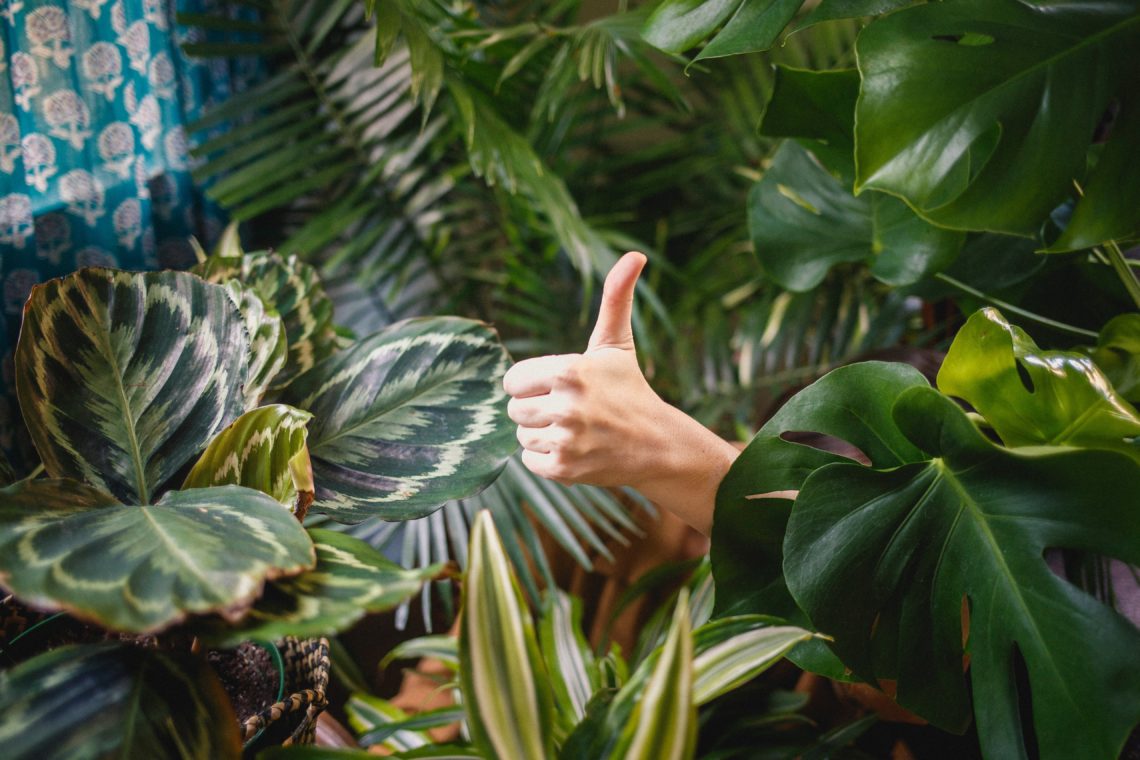
The Plant Advisors
It started during my years living in Maine, when the presence of indoor plants in the house moved from an afterthought to a requirement. Those long months filled with vistas of white, the gardens buried deep in snow and ice, and acres of bare or dull-leafed trees were less bleak whenever I turned towards the indoors for a dose of green. The grouping of plants that I kept by the Western-facing French doors in my small den flourished even in the shortest of winter days and the longest of weeks until the snow melted and the gardens began to awake along about the first of May. During my first winter there and despite my rudimentary knowledge of indoor plants, I gladly accepted a colleague’s gift: a small cutting from a spider plant, the prolific chlorophytum that is prized for its ability to use its striped leaves to clean the air of toxins. It soon filled my windowsill and spilled onto the floor. Not long after, it was joined by a hardy ponytail plant, a trailing inch plant, and several peace lilies. [It is not a coincidence that these plants are all rated as among the easiest plants to grow]. As my indoor jungle grew, I discovered plants’ power, not just to clear the air, but to clear the spirit, rest the eyes, and add the mysterious qualities to my home that signified comfort, peace, and beauty. I “branched out” into more exotic plants such as the colorful zebra plant and even had many years’ success growing a miniature gardenia bush, my favorite flower. As the time drew near for my cross-country move to Texas, I carefully ensconced the hardiest and most-favored plants into the truck. Upon arrival, my surviving plant family found a home in the new sunroom, which is blessed with three walls of sun-lit windows. I started to rebuild my plant repertoire and figured out how to keep my plants watered during the year and a half that we travelled back and forth from one end of the country to the other. Over the past couple of years as my family settled into our permanent home, I gradually added some plants: succulents and aglaonema; snake plants and crotons. Most plants survived and many flourished. Some, like my dear Bonnie Bo Bonsai tree, departed for that big nursery in the sky. Plants don’t just prosper anywhere. Whether high-maintenance or low-care, they all have specific requirements for light and water. They may be able to survive some neglect, but to truly thrive they need more than someone who carelessly plops them down and gives them a half-hearted sprinkle of water now and then. My impulsive venture into the specialized world of bonsai taught me that truly caring for some types of plants cannot be done casually or without some specialized knowledge. I will not journey into bonsai-land again until I know more about this ancient art. I took Bonnie’s lesson to heart. She instructed me, post-mortem, to take time to learn new ways of caring and to make some changes with more intention instead of skimming over care guides or assuming that a slap-dash method will suffice. Advice noted, Bonnie.
Fast forward to January 2020, when the plant population around here closely resembles a rainforest. A January magazine article sparked some new ideas about cheap ways to add welcome and warmth to your home and I’ve greened up almost every room. I checked out a library book about houseplants for reference, made some lists (Well of course I did!) and began my newly energized quest for new plants. Last week while on a shopping trip to a nearby town, I scoured the indoor plant aisles at the big box stores and visited a well-curated local nursery, adding plants along the way. Later in the week during a quick visit to the DFW metroplex, I just had to stop by a well-known garden store and soon another plant, a lemon-lime dracaena, slid onto the truck’s floorboard as I headed southwest towards home to find just the right placement among my growing assortment. Add to that a couple of impulse buys from the grocery store bargain table, and some rather dusty, bedraggled plants leftover from last summer at the local hardware store that I am coaxing back to health and now the place is bursting with plants everywhere. Have I gone overboard? (Well of course I have!)…but each time I see one of the plants, whether one of the two remaining transplants from Maine, or the many that have joined them, I am happy for the touch of green and the life and vitality that they generously impart.
To me, plants have an almost magical quality. Somehow, programmed into their plant genetics or embedded into their leaves, stems or flowers, they manage to touch the deepest parts of us humans. They cheer us up when we are sick; they are the silent voice of someone’s love; they help us celebrate; they honor and they comfort; they express grief in wordless beauty. Their complete absence, as in some sterile or restricted environments, can contribute to depression. I am not quite sure why, as the winter lingers, I have had this sudden uptick in the need for more and more and more plants around me. Is it because of the protracted time indoors over the past few weeks? Is it my inner decorator that always “blooms” this time of year, seeking just the right touch to make my home feel warm and welcoming? Whatever it is, I’m enjoying it immensely. It is a simple enough thing to do and with my penny-pinching ways, a lot less expensive than taking a mid-winter trip to tropical climes. My plants bestow a type of plant-based therapy, much more accessible than a counselor’s office and you certainly can’t beat plants’ abilities to keep confidences. I have assembled an interesting gathering of wise plant advisors.
As I look at the newly purchased trailing philodendron that has a place of honor near my office windows, I already notice how much it has grown just in the 6 days it has been in its new location. It tells me that growth of all kinds is not always slow and steady, as I tend to believe. No, sometimes it is miraculous and swift. Sometimes growth happens right before our eyes. Thanks Phillie. I need that reminder to remain open to amazement and the unexpected. When after a busy day, I head off to draw my nightly bath, I am now greeted by three lovely plants of different varieties that like high humidity and medium light- a variegated pothos, a flamingo flower and a purple waffle plant. Along with some new candles, these plants signal that I must save some time to rest and relax, always a challenge for me. I’m grateful as I sink into the warm water and rest my eyes on my purple, red, and green companions. As I repotted and relocated some of my collection, I discovered that my poor little succulents were just about to drown, the victim of too much attention even though I thought I was watering them sparingly. Now, dried out and replanted, they sit in the sunniest window available. I discover another lesson tucked under the jade plant’s fat leaves–advice about the importance of leaving some things alone and letting them flourish without overbearing attention. That brand new dracaena hasn’t quite found its happy place yet. I’m staying flexible as I try to figure out the optimum light level that it prefers. I’m learning to observe more carefully and intentionally as I grow in my plant-nurturing skills. I’m taking a little more time to notice a lot of other things lately, too—from the plant and animal and human realms. And that spider plant I have babied for over a dozen years from Maine to Texas? It is not only surviving, but has suddenly gone a little crazy, working overtime to share its priceless beauty. It is putting out new baby plants everywhere. I am rooting them and will be giving a start to my lifelong friend whose own spider plant is showing signs of stress. Thanks, Spidey, for showing me that relocation might set me back for a while, but given some time to establish new roots, a move can become another opportunity to grow, clear, thrive, and share.
I’m sure there are many more gems of wisdom and advice hidden among the stems and leaves of these plants old and new. And I have to run to the grocery store in a few minutes… maybe there is another little green bargain just waiting for me to bring her home. (Well, of course there will be!) I smile as I imagine what messages await.
Reflection Question:
Plants have long been used as metaphors for emotion, emblems of nations and
peoples and symbols of wisdom or folly.
From the tiny mustard seed to the cedars of Lebanon, plants play a
central part in faith stories. They are
often used to teach lessons or to evoke memories. The Divine can speak to us in all forms of
nature, in green and growing ways. Look
around you, indoors or outdoors, right at this particular point in time. Are there any “plant advisors” around you?
What messages might they be sharing?
Photo by Katya Austin on Unsplash





2 Comments
Cheryl Rogers
What a delightful way to look at plants! Lessons from a plant: stay rooted and reach for the light. I volunteer to adopt a baby from your spider plant.
Beth Hatcher
I’ll have a plant ready for you!